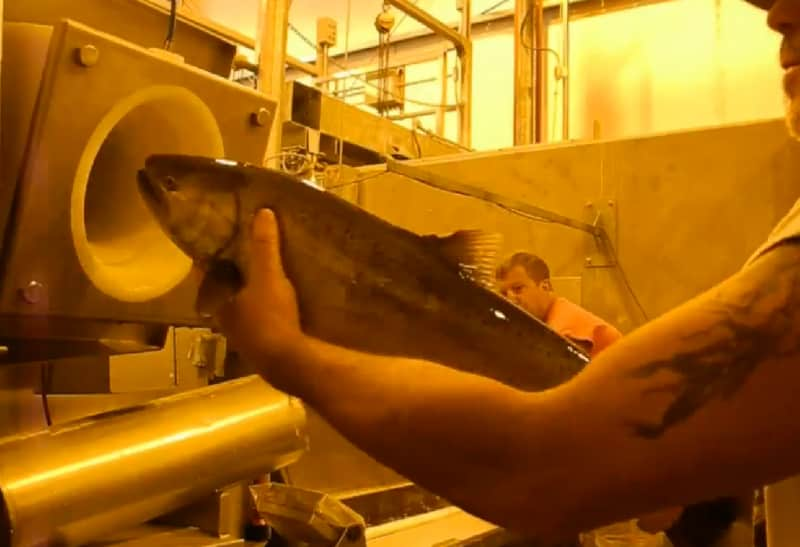Experimental Vacuum Method Used to Transport Salmon in Washington
OutdoorHub Reporters 06.06.14

Every year, thousands of spring chinook salmon return to Washington’s Yakima River and cross Roza Dam to their spawning sites upriver. Not all make it through however—a portion of the fish are captured and transported to the Cle Elum Hatchery as brood stock. According to the Yakima Herald, this delicate process usually sees workers hastily ferrying the fish by hand from a holding tank to a tanker truck. Biologists with the Yakima Nation Fisheries think they have a better method, and one that is potentially safer for the fish as well.
In cooperation with Whooshh Innovations, a Seattle company which manufactures tubes for the transport of live or fresh fish, the agency is setting up a system where the salmon are transported from the dam’s collection tanks through a 40-feet vacuum sleeve. According to Whooshh Innovations, the suction method can transport approximately 40 fish per minute at a speed of 10 meters per second. The sleeves are designed to be gentle and flexible while being easy to maintain. There is also no water used throughout the process except for a light mist introduced for lubricity.
While it may seem hazardous, biologists say the short trip should not injure the salmon at all. It would also be far more efficient than having workers carry hundreds of chinook across the facility. Tribal research scientist Mark Johnson told the Herald that if the suction method proved to be harmless, the technique may be deployed at other northwestern dams.
Sections of the Yakima River opened for chinook fishing last month with a daily limit of two hatchery salmon per angler. Over 3,000 adult hatchery chinook salmon are expected to return to the river this year. Those familiar with the area generally consider the stretch of water between Easton and Roza Dam as the best for fishing.
You can see a video of suction system at work below:

